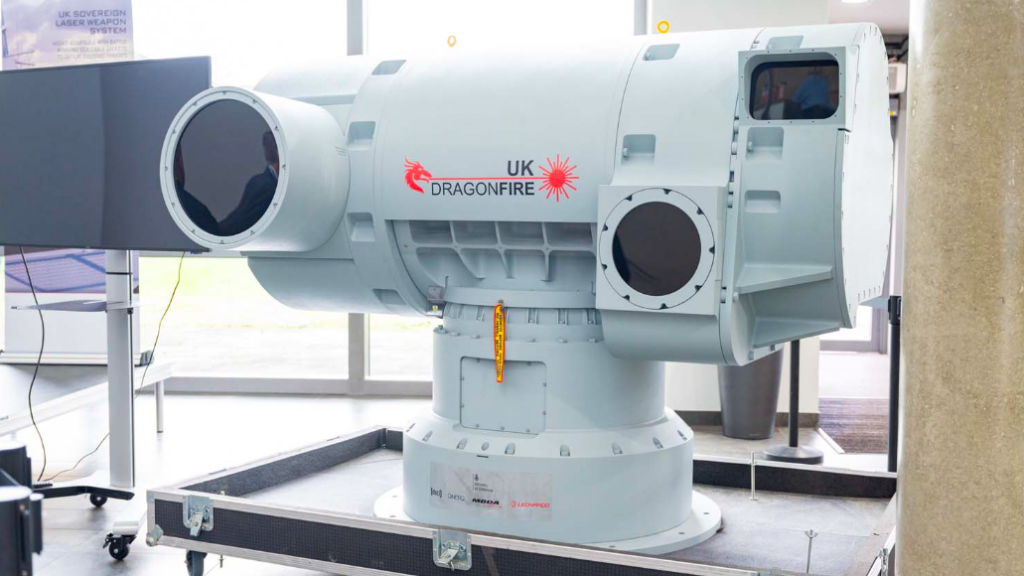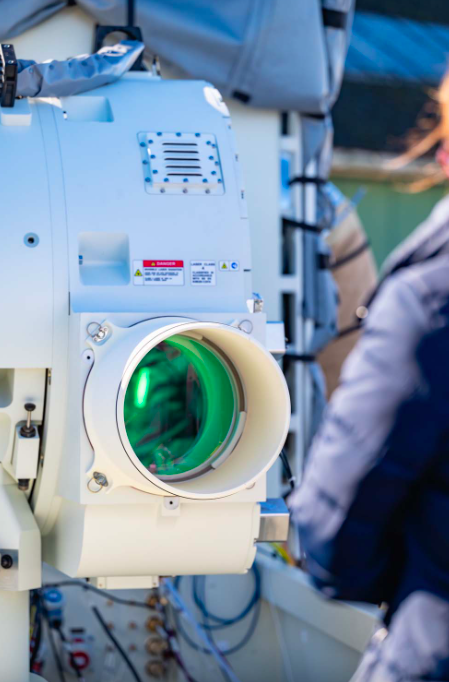
£10-a-pop laser to be installed on warship
The Royal Navy is adding to its arsenal in the next three years – it will be installing what it describes as ‘a powerful laser weapon’ on a warship in 2027. The image above is what the navy says it could look like, when fired from a ship.
The jauntily named DragonFire will add to the navy’s array of air defence weaponry, which includes the Sea Viper and Sea Ceptor missile systems. Those have recently shot down Houthi targets in operations in the Red Sea with HMS Diamond and HMS Richmond.
Used to counter drone and missile threats, a burst of the high-intensity beam from DragonFire costs no more than £10 – yet can engage targets at the speed of light.

The laser has been under development for nearly a decade and underwent tests in the Hebrides at the start of this year.
Now, plans have been brought forward five years from 2032 to install DragonFire on a Royal Navy ship under new procurement rules which were recently introduced.

“The Royal Navy has always been on the front foot to embrace new technologies to enhance our capability,” says Captain Matt Ryder, responsible for new capabilities as head of above water battlespace.
“We recognise this cutting-edge UK laser weapons technology as highly relevant and the need to accelerate it into service on board our ships at the earliest opportunity.
“Clearly a current operational focus is on protecting freedom of navigation in the southern Red Sea as part of Operation Prosperity Guardian, where in recent months HMS Diamond and HMS Richmond have each successfully deployed air defence capabilities to defend legitimate shipping in the area against drone and missile threats.
“Noting the quantity and varied sophistication of air and missile threats seen in the southern Red Sea, we see a very relevant and current example of where laser weapons could provide an additional layer of defence to protect shipping, at a potentially much lower cost per shot and without the inherent onboard magazine and silo capacity constraints associated with interceptor missiles.”
Recently the navy revealed that it’s ‘999 emergency centre’ has dealt with an ‘unprecedented’ rise in distress calls due to the Red Sea crisis. The team at the UK Maritime Trade Organisation (UKMTO) deals with two or three reports of attacks and incidents daily – compared with monthly – as a result of the wave of attacks on shipping in the southern Red Sea and Gulf of Aden since November.

DragonFire has been developed by the Defence Science and Technology Laboratory (Dstl), on behalf of the UK MOD, working with its industry partners MBDA, Leonardo, and QinetiQ.
Dstl’s chief executive, Paul Hollinshead, says: “This is excellent news, and a real step forward in enabling operational advantage at pace for UK Defence. Dstl is all about preparing for the future and the DragonFire technology is a great example of that.
“Our scientists along with industry partners have worked tirelessly to bring laser technology to where it is today, one which I am proud to say is a UK sovereign capability.”
The post £10-a-pop laser to be installed on warship appeared first on Marine Industry News.
